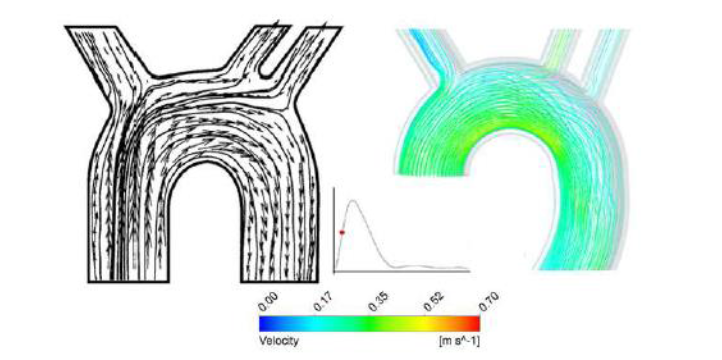Engineering Science
"Example of CFD and FSI analysis in the Biomechanical Field"

"Fluid Structure Interaction in the Thoracic Aorta using Large Eddy Simulation”
Vascular illnesses such as atherosclerosis and cerebral aneurysm develop in the arterial wall by the degeneration of blood vessels, a process which is initiated by haemodynamic forces, especially wall shear stress (WSS). This parameter is known to cause damage to endothelial cells; therefore a haemodynamic simulation to study the fluid forces and stresses is desirable. In the present study, large eddy simulation (LES) along with a one-way coupled fluid-structure interaction analysis is used with boundary conditions averaged from patient data to investigate the temporal/spatial evolution of the flow patterns, WSS, vorticity and total deformation during the systolic and diastolic phases for an aortic arch model with three branches. The flow solutions agree with previous studies in-vitro which exhibit a bubble separation around the inner arch, and accelerated flow around the outer arch wall near the junctions of the left carotid and the left subclavian arteries. A recirculation vortex is also observed around the outer arch wall near the junction of the brachiocephalic artery and at the entrances of the other two branches. The largest wall deformation occurs at the last phase of systole in the middle part of the aortic arch.
Award Two
Lorem ipsum dolor sit amet consectetur adipisicing elit. A, sequi?
Award Three
Lorem ipsum dolor sit amet consectetur adipisicing elit. A, sequi?